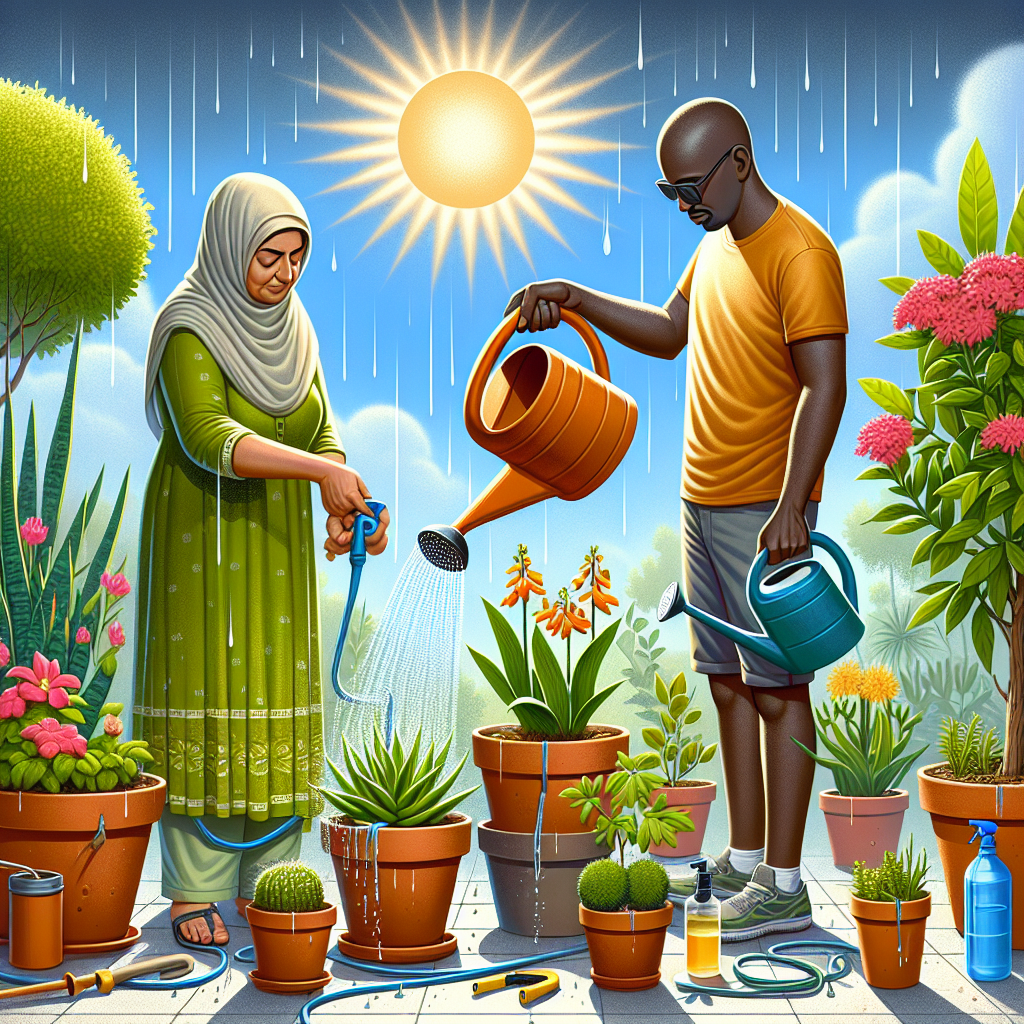With the scorching heat of summer fast approaching, many gardeners are faced with the challenge of keeping their container plants hydrated and healthy. The intense heat can quickly dry out the soil in containers, causing stress to plants and leading to wilted leaves or even plant death. But fear not, there are simple and effective tips to help you keep your container plants thriving during hot summers.
In this comprehensive guide, we will explore various strategies and techniques to ensure your container plants stay hydrated and happy throughout the summer months. From choosing the right containers and soil mix to implementing proper watering techniques, we will cover everything you need to know to maintain a lush and vibrant container garden. So grab your watering can and let’s dive into the world of container plant care!
**Choose the Right Containers**
Selecting the right containers for your plants is crucial for their overall health and hydration. When it comes to container gardening, porous materials like terracotta or clay pots are excellent choices as they allow for better airflow and drainage. These materials help prevent waterlogging, which can lead to root rot in plants.
Plastic or resin containers are also popular options for container gardening, as they retain moisture well and are lightweight and easy to move around. However, be sure to choose containers with drainage holes at the bottom to allow excess water to escape. Without proper drainage, water can accumulate at the bottom of pots, creating a breeding ground for root diseases.
**Use a Well-Draining Soil Mix**
In addition to choosing the right containers, using a well-draining soil mix is essential for keeping your container plants hydrated during hot summers. A quality potting mix specifically formulated for container gardening will provide adequate drainage while retaining moisture effectively.
Avoid using garden soil in containers as it tends to compact over time, restricting airflow and water drainage. Instead, opt for a lightweight potting mix that contains ingredients like perlite or vermiculite for added aeration. These ingredients help prevent soil compaction while promoting healthy root growth.
When repotting or transplanting your container plants, be sure to refresh the soil mix every year to maintain optimal growing conditions. This practice helps replenish nutrients in the soil and ensures proper water retention for healthy plant growth.
**Water Properly**
Proper watering is key to keeping your container plants hydrated during hot summers. Inconsistent watering can stress plants and lead to wilting or stunted growth. To avoid overwatering or underwatering your plants, establish a regular watering schedule based on their individual needs.
Check the moisture level of the soil regularly by inserting your finger into the top inch of soil. If it feels dry to the touch, it’s time to water your plants. Water slowly and deeply until you see excess water draining out of the bottom of the pot.
During periods of extreme heat, you may need to water more frequently as evaporation rates increase. Early morning or late evening is the best time to water container plants as it allows time for moisture absorption before temperatures rise.
**Provide Shade**
Protecting your container plants from direct sunlight during peak hours can help reduce water loss through evaporation and prevent heat stress. Consider placing your pots in areas with partial shade or providing temporary shade using umbrellas or shade cloth.
If moving pots is not an option, consider grouping them together strategically so they can provide shade for each other during intense sunlight hours. This practice helps create a microclimate that retains moisture in the soil while shielding plants from harsh sun exposure.
**Mulch Your Containers**
Mulching your containers is another effective way to conserve moisture and reduce evaporation rates during hot summers. Apply a layer of organic mulch like shredded bark or compost around the base of your plants to help retain soil moisture while suppressing weed growth.
Mulching also helps regulate soil temperature by shielding roots from extreme heat exposure in summer months. This practice promotes healthy root development while maintaining consistent moisture levels in containers.
**Frequently Asked Questions (FAQ)**
1) How often should I water my container plants during hot summers?
– Water frequency depends on several factors such as plant type, container size, and weather conditions. Check soil moisture regularly and adjust watering schedule accordingly.
2) Can I use self-watering containers for my plants?
– Self-watering containers are convenient options for busy gardeners as they provide consistent moisture levels for plants. However, be mindful of monitoring water levels regularly to prevent overwatering.
3) What signs indicate that my container plants are dehydrated?
– Wilted leaves, yellowing foliage, or dry potting mix are common signs of dehydration in container plants. Adjust watering practices promptly if you notice these symptoms.
4) Is it necessary to fertilize my container plants during hot summers?
– Fertilizing container plants is essential for replenishing nutrients depleted from frequent watering in summer months. Use a balanced liquid fertilizer every few weeks according to package instructions.
By implementing these tips and strategies for keeping your container plants hydrated during hot summers, you’ll ensure a thriving garden full of healthy and vibrant foliage all season long. With proper care and attention, you can enjoy beautiful blooms and lush greenery in even the hottest weather conditions.













